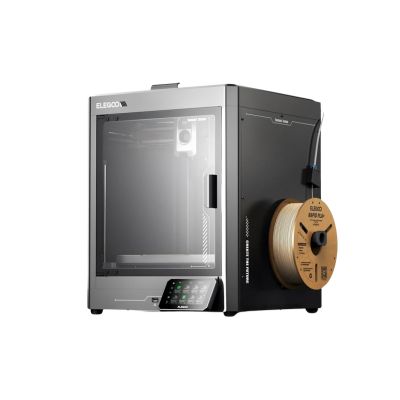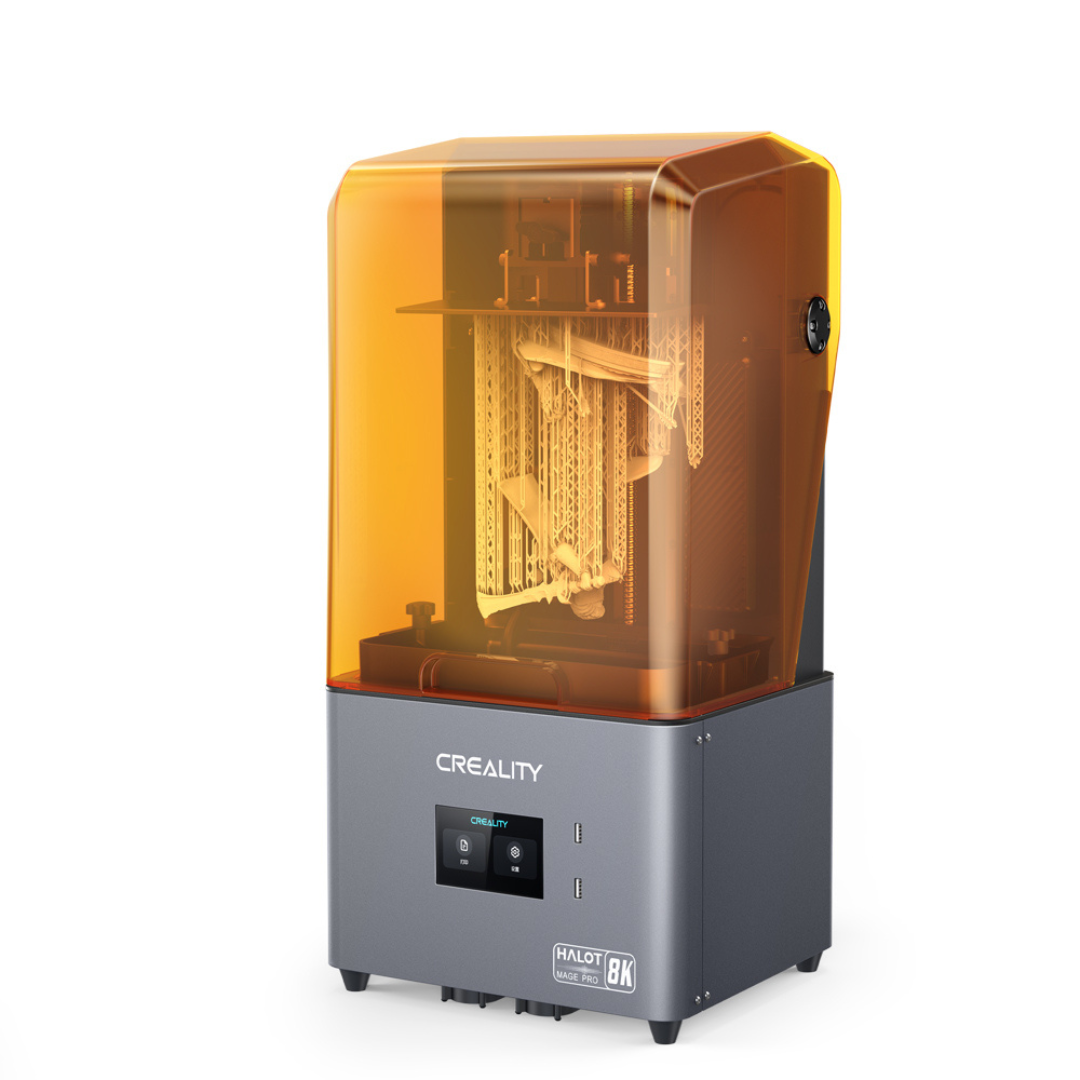Compare Centauri Carbon vs Halot Mage PRO
Comparison between the best 3D printers
Choose the best 3D printer at the best price. The cheapest 3D printers are here.
Buy a 3D printer here with 3D Fila.
 |
 |
|
| Model | Centauri Carbon |
Halot Mage PRO |
| Printing Material | Filament | Resin |
| Buy Filament for Elegoo Centauri Carbon | Buy Resin forCreality 3D Halot Mage PRO | |
| Estimated price | $500,00 | $479,00 |
| Manufacturer | Elegoo | Creality 3D |
| Release Year | 2025 | 2023 |
| Print Volume [mm] | 256x256x256 | 228x128x230 |
| Printer Size [mm] | 500x500x600 | 333x270x608 |
| Weight [kg] | 17,5 | 13,3 |
| Power Loss Recovery | YES | NO |
| Maximum Resolution [mm] | 0,1 | 0,01 |
| Processor | ||
| Display | Touchscreen 4,3'' | Display touchscreen 4,3'' |
| Power Supply | 350 W | 150 W |
| Connectivity | WiFi, SD, USB | USB / Wi-Fi / Ethernet |
| Operating systems | Windows, Linux e Macbook | Windows, Mac, Linux |
| Date of registration in the system | 2025-02-10 | 2023-12-18 |
| Release date | 2025 | 2023 |
| Extra features | The Elegoo Centauri Carbon is a CoreXY 3D printer with an enclosed structure, direct drive extruder, and hardened steel components for abrasive materials. It features automatic bed leveling, a touchscreen, a filament cutting system, and an elongated nozzle designed to reduce clogs. It offers Wi-Fi connectivity for remote file transfer and runs on a Klipper-based firmware, providing advanced control and precise adjustments. | The Creality HALOT-MAGE PRO is an advanced resin 3D printer, distinguished by its high build quality and detailed prints. It uses SLA technology with an 8K LCD screen, providing refined prints in a 228x128x230mm area. It offers an impressive printing speed of up to 170mm/h. Its design includes an automatic resin management system and an integrated air purifier, making it easier to use and reducing odors. Although it requires post-print cleaning, its intuitive interface and connectivity options such as cloud and LAN make the HALOT-MAGE PRO a robust choice for professionals and enthusiasts. |
| Support for multiple colors and materials (AMS and CFS) | NO | NO |
Notes * |
||
| Cost-benefit | 8 / 10 | 8 / 10 |
| Hardware | 6 / 10 | 4 / 10 |
| Tela | . | . |
| Print volume | 4 / 10 | 3 / 10 |
| Performance | 4 / 10 | 9 / 10 |
Conclusion |
| In comparing the Elegoo Centauri Carbon and the Creality 3D Halot Mage PRO, several key factors emerge that can guide potential buyers in selecting the right 3D printer for their needs. Firstly, the print volume and overall size of the Centauri Carbon stand out. With a larger print volume of 300x300x300 mm compared to the Halot Mage PRO's more compact 228x128x230 mm, the Centauri Carbon is better suited for larger projects. Additionally, its robust weight and enclosure indicate a design focused on stability and durability. On the other hand, the Halot Mage PRO excels in print resolution, offering a maximum resolution of 0.01 mm, which is significantly finer than the 0.1 mm resolution of the Centauri Carbon. This makes it ideal for detailed and intricate prints, particularly valuable for professionals in fields requiring high precision. Power features present another distinction; the Centauri Carbon supports power loss recovery, a critical feature that can safeguard prints during unexpected power interruptions—however, it demands a higher power supply. In contrast, the Halot Mage PRO's lower power consumption and advanced resin management system contribute to a more user-friendly experience, especially with its integrated air purifier. Despite the advanced features and high performance of the Halot Mage PRO, it has a smaller print volume. The choice ultimately depends on the user's specific needs: for those prioritizing larger print dimensions and durability, the Centauri Carbon is a strong contender. Conversely, for users focused on achieving high detail and speed in prints, the Halot Mage PRO offers superior performance and convenience. Both models offer excellent cost-benefit ratios, but the right choice ultimately hinges on the user's requirements for print size versus print quality and detail. In summary, each printer has distinct advantages that cater to different preferences and use cases; thus, the decision should align with the intended applications and the importance of features such as print size and resolution. |

